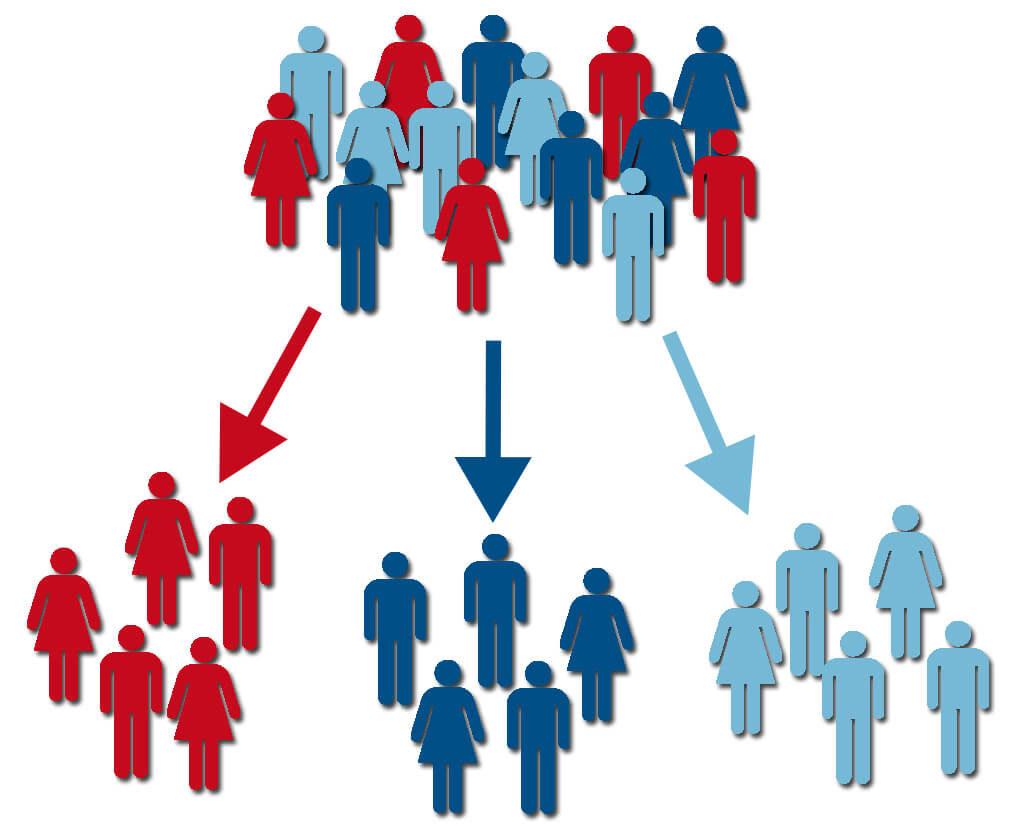
In the vibrant world of influencer marketing,the connection between a brand and its audience has never been more vital. As businesses strive to carve out their niche in a crowded marketplace, the nuances of audience demographics emerge as a important driver of success. Understanding who engages with an influencer—their age, interests, geographic location, and social habits—can unlock the potential for deeper engagement and more effective campaigns. In this article, we will explore how these demographics shape the strategies brands use to cultivate authentic relationships with their target consumers, demonstrating that knowing your audience isn’t just a luxury—it’s a necessity in the ever-evolving landscape of digital marketing. Join us as we delve into the intricate interplay between audience insights and marketing success, revealing why the right influencer, with the right audience, can be a game changer for brands looking to thrive in today’s competitive environment.
Understanding the Power of Audience Segmentation in Influencer Marketing
In the realm of influencer marketing, understanding your audience is akin to wielding a powerful magnifying glass that can illuminate various pathways to success. By breaking down your target audience into segments, brands can tailor their messaging and campaigns to specific characteristics such as age, location, interests, and purchasing behavior. This granular approach ensures that the content resonates deeply with potential customers, enhancing engagement and fostering loyalty. When brands partner with influencers who have a strong connection to these segments, the likelihood of authentic engagement skyrockets, leading to improved conversion rates and brand trust.
Employing data-driven audience segmentation helps in curating more relevant campaigns that can effectively capture attention. Consider the following key factors that can be analyzed to optimize your influencer marketing efforts:
- Demographics: Age, gender, income level, and education can guide content creation.
- Psychographics: Interests, lifestyle, values, and personality traits play a crucial role in resonating messages.
- Behavioral Data: Purchase history and online behavior can refine targeting strategies.
To illustrate the meaning of these factors, the table below highlights potential audience segments and corresponding influencer types:
| Audience Segment | Recommended Influencer Type |
|---|---|
| Millennial tech Enthusiasts | Tech Reviewers & Gadget Experts |
| Health-Conscious Consumers | Fitness Influencers & Nutritionists |
| Eco-Pleasant Shoppers | Enduring Living Advocates |

Tailoring Content to Match Audience Interests and Preferences
Understanding your audience is pivotal in crafting compelling content that resonates with their unique interests and preferences. When influencers tailor their messaging to align with the demographics of their followers, they not only capture attention but also foster genuine connections. This helps in creating a sense of community, where followers feel seen and valued. Key factors to consider include:
- Age Range: Different age groups resonate with varying styles of communication and content themes.
- Gender: Tailoring content that reflects the lifestyle and preferences of a predominantly male or female audience can enhance engagement.
- Location: Localizing content to reflect regional interests can create relatability and strengthen community bonds.
- Interests and Hobbies: Customizing content around what your audience enjoys doing encourages interaction and sharing.
In practical terms, an influencer’s strategy might involve analyzing demographic insights through analytic tools to inform their content direction. By segmenting their audience and curating specialized content, influencers can enhance their credibility and improve their marketing effectiveness.Here’s a simplified depiction of how different demographics attract certain types of content:
| Demographic | Preferred Content Type |
|---|---|
| Teens (13-19) | Trendy and entertaining videos |
| Young adults (20-35) | Informative blogs and lifestyle vlogs |
| adults (36-50) | Professional development and in-depth reviews |
| Seniors (51+) | Health tips and nostalgic content |

Leveraging Data Analytics for Enhanced Influencer Partnerships
In today’s digital landscape, data analytics serves as the backbone of accomplished influencer partnerships. By understanding audience demographics through detailed analytics, brands can pinpoint which influencers resonate most effectively with their target market. this strategic alignment not only maximizes reach but also enhances engagement rates, ensuring that marketing efforts translate into tangible results.Key factors to consider include:
- Age Groups: Identifying whether the influencer’s audience aligns with the brand’s target age demographic.
- Gender Distribution: Ensuring that the influencer’s follower gender ratio matches the client’s brand messaging.
- Geographic Location: Evaluating the location data to tailor content to specific regions or demographics.
- Interests and Behavior: Analyzing audience interests to ascertain compatibility with the brand’s products or services.
Moreover, employing data analytics unveils a wealth of insights that can guide campaign strategies. For instance, mapping engagement metrics against demographic profiles helps in fine-tuning the content approach. A comparison table showcasing influencer performance metrics versus audience alignment could illustrate this point beautifully:
| Influencer | Follower Count | Engagement Rate | target Audience Demographic |
|---|---|---|---|
| influencer A | 150k | 5% | 18-24,Urban Females |
| Influencer B | 300k | 3.5% | 25-34, Tech Enthusiasts |
| Influencer C | 200k | 4.8% | 18-30, Fashion aficionados |
Analyzing such data allows brands to select influencers who not only hold sway over their audience but also cater to the specific demographic segments that matter most for campaign success. Thus, leveraging analytics not only empowers brands to engage the right influencers but also cultivates a symbiotic relationship that drives significant brand visibility and loyalty.

Measuring Success Through Audience Engagement and Feedback
Measuring success in influencer marketing hinges on understanding how well an audience interacts with content. By analyzing engagement metrics, brands can discern what resonates most with their target demographic. Key indicators include:
- Likes and Shares: A high number indicates strong resonance and visibility.
- Comments: insights into audience sentiment and topical relevance.
- Click-Through rates (CTR): Essential for evaluating the effectiveness of calls-to-action.
Moreover, soliciting and integrating audience feedback creates a two-way dialog that not only enhances brand affinity but also informs future campaigns. Utilizing surveys or social media polls allows brands to gauge perceptions directly, leading to more tailored content. Here is a simplified view of potential feedback mechanisms:
| Feedback Method | Purpose |
|---|---|
| Surveys | In-Depth Audience Insights |
| Social Media Polls | Quick Sentiment Check |
| Comments Analysis | Real-Time Feedback on Content |
To Wrap It Up
the intricacies of audience demographics in influencer marketing cannot be overstated. As we navigate this dynamic landscape, it becomes clear that understanding the diverse tapestry of your target audience is the cornerstone of any successful campaign. By honing in on age, gender, interests, and cultural backgrounds, brands can forge authentic connections that resonate on a deeper level. As influencers continue to shape consumer behavior, the power of demographic insights will only grow stronger, guiding brands in crafting messages that not only captivate but convert.As we move forward, let us embrace the art of storytelling woven with the science of analytics—together, they illuminate the path to success in this ever-evolving realm of marketing.